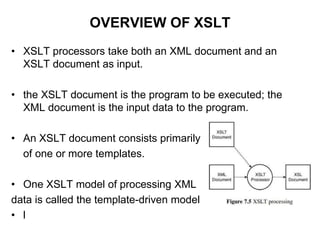XML (eXtensible Markup Language) is a markup language that defines a set of rules for encoding documents in a format that is both human-readable and machine-readable. It is used to store and transport data. The document discusses XML, comparing it to HTML and SGML. It also covers XML parsers, schemas, namespaces, XSLT, and other XML concepts in detail.
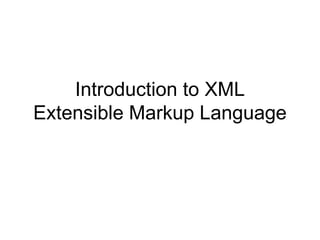






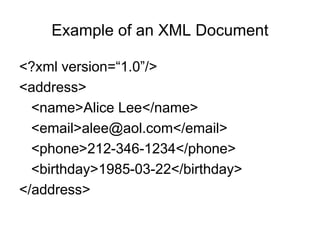


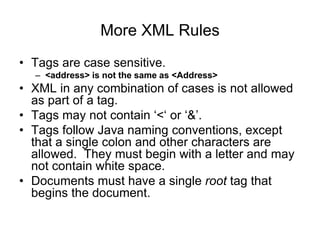



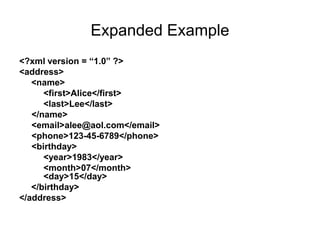





![Document Type Definitions
• The form of an element declaration for
elements that contain elements
• <!ELEMENT element_name(list of names of child elements)>
• The form of an Attribute declaration
• <!ATTLIST element_name attribute_name
attribute_type[default_value]>
• Ex.<!ATTLIST airplane places CDATA “4”>](https://image.slidesharecdn.com/introductiontoxml-220811093724-567e9c98/85/Introduction-to-XML-ppt-21-320.jpg)

![INTERNAL AND EXTERNAL DTDs
• Internal DTD Example:
• External DTD Example: [assuming that the DTD
is stored in the file named planes.dtd]
<!DOCTYPE planes_for_sale SYSTEM “planes.dtd”>](https://image.slidesharecdn.com/introductiontoxml-220811093724-567e9c98/85/Introduction-to-XML-ppt-23-320.jpg)

![NAMESPACES
• An XML namespace is a collection of element and attribute
names used in XML documents. The name of a namespace
usually has the form of a uniform resource identifier (URI).
• The form of a namespace declaration for an element is
• <element_name xmlns[:prefix] = URI>
• The square brackets indicate that what is within them is
optional. The prefix, if included, is the name that must be
attached to the names in the declared namespace.
• <html xmlns = “http://www.w3.org/1999/xhtml”>](https://image.slidesharecdn.com/introductiontoxml-220811093724-567e9c98/85/Introduction-to-XML-ppt-25-320.jpg)











